The farm, pilot and suit: A definitive guide to the Foothills Park controversy
A sign at the entrance to the park clearly indicates the park’s restrictions. “Palo Alto residents and accompanied guests only,” it reads.
Palo Alto’s Foothills Park — where, by law, non-Palo Altans can be cited with a misdemeanor for entering the park — has been embroiled in a divisive debate over its non-resident ban for years.
Recently, however, the controversy has come to a head after a summer of protests likening the policy to “segregation.” On Tuesday, September 15, the American Civil Liberties Union of Northern California (ACLUNC) filed a lawsuit demanding that the City remove its residents-only ordinance, citing violations of the freedoms of travel, speech and assembly. The suit also alleges that the non-resident ban is discriminatory, in light of Palo Alto’s history of housing discrimination.
Supporters of the park restrictions, however, have argued that the park is rightfully Palo Alto’s land and is effectively open to everybody, despite the legal code; they also cite environmental concerns as a reason to keep the park restrictions.
The Talon spoke to City Council members, City staff, ACLUNC, a plaintiff, a protest organizer and concerned residents to put together a definitive guide to the controversy, broken into three parts: the farm, the pilot and the suit.
The Farm
To this day, much of the controversy surrounding the park traces back to its original founding, with both sides using the history of the park to support their stances.
In 1959, the City of Palo Alto purchased the land for $1.2 million — about $10.8 million in today’s money — from Dr. Russell Lee, who at the time called the property “Boronda Farm.” The City then built the trails, picnic areas, roads and the manmade Boronda Lake on the former ranch.
As frequently cited by proponents of a restricted park, when purchasing the land, Palo Alto requested that the neighboring cities of Los Altos Hills and Portola Valley contribute to the purchase; both cities declined, which factored in part to the residents-only clause.
The recent lawsuit, however, claims that both Los Altos Hills and Portola Valley were relatively new at the time and could not have been expected to contribute significantly to the cost of the acquisition.
The suit further argues that in 1964, the City rejected an offer from Santa Clara County, which was willing to contribute $500,000 toward the $1.2-million purchase.
“The City turned down the offer — which would have defrayed a significant portion of those costs — because accepting the County’s offer would mean that the Park would need to be open to all,” the suit reads.
The City opened the park in 1965 and applied its standing non-resident ordinance four years later.
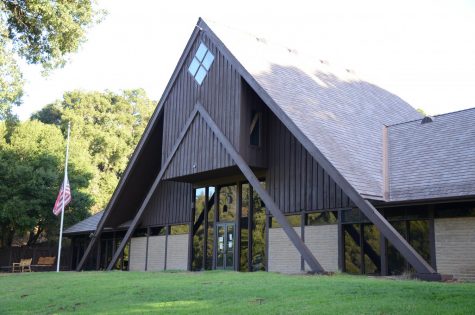
A recent City Council staff report shows that there has been interest in opening the park to non-residents since the implementation of the ordinance; however, in 1973, the Council unanimously voted to keep the residents-only ordinance, citing the fact that the City originally purchased the park out of its General Fund and therefore did not use any federal monies. The issue was brought up again in 1991 and 2005, but the City voted to keep the ordinance both times.
Judge Ladoris Hazzard Cordell, one of 10 plaintiffs in the suit, who also served on the City Council from 2004 to 2008, said that she brought up the issue during her time on the Council.
“My request went nowhere,” she said. “There was pushback from council members and strong opposition from longtime residents, all of whom were white.”
In 2005, the City Council voted to allow non-residents into the park via the Bay-to-Ridge trail, a series of roads and trails that runs through Palo Alto, in exchange for $2 million in funding from the California Coastal Conservancy and Santa Clara County to purchase additional acreage to expand the park.
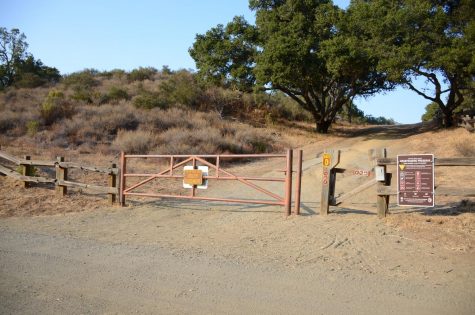
Under that clause, non-residents are allowed to enter the park through the trail without risking citation. However, William Freeman, senior legal counsel at ACLUNC, argued that the trail does little to make the park more accessible.
“You can think of it like a tunnel, where as soon as you step off the trail you risk citation,” Freeman said. “And it comes nowhere near the main gate.”
However, as noted by City Council Member Greg Tanaka, rangers are only present at the main entrance on weekends and holidays, meaning that the residents-only ordinance isn’t enforced around 70 percent of the year; even on days when rangers are present, the restrictions aren’t enforced before opening time.
Tanaka also mentioned that there are at least three alternate trail entrances to the park, and another two offered by fire roads; City staff only checks for proof of residency at the main gate, off Page Mill road. However, it is still illegal for non-residents to enter from any of the alternate gates.
Tanaka said that one of his friends organized a “walking club” with 40–50 members, which would meet Saturday mornings at the park. Only he and his friend were Palo Alto residents.
“We can talk about all this, but the truth is that some people go in the park all the time,” Tanaka said. “I mean, how big of an issue is it really?”
“That’s like saying you can enter a store to buy Halloween decorations, just not in September or October,” Anjali Ramanathan, a Los Altos Hills resident now attending Oxford University, said. “I don’t imagine weekday access to a park being something that working families could use.”
Ramanathan organized one of the protests at the park this past summer, demanding that the City open the park to all.
No sources were aware of any actual citation of a misdemeanor for entering the park ever taking place, although The Talon was not able to independently verify that fact. Under the Palo Alto Municipal Code, a misdemeanor could result in up to six months’ imprisonment and a fine of up to $1,000.
“Whether or not people have been cited, the point is that people have been stopped from entering the park,” Freeman said. “Anyone that goes into the park risks citation just by being in the park, so you’re not going to want to go.”
The Palo Alto Parks and Recreation Commission estimated that staff turn away around 60 non-residents per week and several thousand per year.
The Pilot
Another complication to the controversy surrounding the park is the yet-to-be-implemented pilot program, which would begin to lift some of the park restrictions during a trial period.
In October 2018, the Palo Alto Parks and Recreation Commission formed a committee to expand access to the park. By November 2019, the committee had put together a final proposal for a pilot program that would, for a year, allow non-residents to enter after paying $6 fee. A cap of 50 non-residents and the standing 1,000-person total attendance cap would also be put in place.
The City Council — citing a stacked schedule — did not review the program until Tuesday, June 23, and even then, voted 5–2 to table the matter until its August 3 meeting.
Former Parks and Recreation Commission member Ryan McCauley was one of three people assigned to the committee.
“Candidly, I think it’s fair to say that the elevated concerns about Black Lives Matter are what precipitated the mayor to make sure it was put on the agenda,” McCauley said, speaking of the June meeting. “But the majority of the Council obviously didn’t want to talk about it, so they yanked it.”
Tanaka disputed that fact, saying that the Council ran out of time because it had to deal with the budget deficit caused by the coronavirus’s impact on Palo Alto businesses.
“We had 40–50 hours of budget meetings, so that and a few items got pushed out,” Tanaka said. “Personally, I think we should’ve just kept going and had a meeting the week after, but staff wanted to go on summer break.”
McCauley resigned in protest after the June meeting, citing what he called a refusal from the City to confront the issue.
In its August meeting, the Council voted to approve the draft of the pilot, with additional provisions, in the same 5–2 majority that had voted to table the matter in June. Specifically, it was the draft ordinance, not the final go-ahead for the pilot, that was approved in that meeting — city staff is yet to return to the Council with a final pilot program for approval.
The provisions added by the Council stipulated costs for monitoring equipment, upgraded parking areas, increased restroom maintenance and an extra ranger, amounting to around $200,000. On top of that, the Council voted in favor of adding a “revenue-neutral” clause, meaning the pilot must entirely make up for the increased spending. According to McCauley, entrance fees would have to be high enough to recoup the $200,000, so the park would remain “inaccessible.”
“They voted on all those extra costs, then injected what I think is fair to call a ‘poison pill,’ which is that the pilot program had to generate enough revenue to cover all of those costs,” McCauley said.
City Manager Ed Shikada said that staff is “working on options” to meet the revenue-neutral requirement.
Additional upgrades amounting to around $2.1 million were discussed in the August meeting, including repaved roads, remodeled bathrooms and repaired bridges, but those were pre-existing needs unrelated to the pilot.
Tanaka said that he was under the impression that the $200,000 were not in fact from unneeded additions, but solely from costs essential to the pilot.
Currently, the park employs three rangers. The fourth Supervising Ranger position remains vacant after a previous retirement. The Parks and Recreation Commission estimates that the staffing to enforce the non-resident ban at the main gate currently costs $89,000 per year.
Assistant Director of Community Services Daren Anderson said in the August meeting that under the pilot program, it would be hard for the three current rangers to keep up the maintenance without an additional hire.
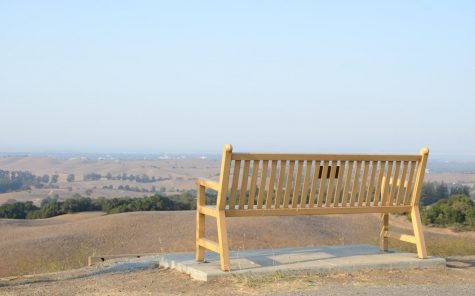
Tanaka — who suggested the revenue-neutral clause — and others in the five-member majority argued in favor of the clause, expressing their concerns about spending City funds on the pilot in light of the City’s large budget deficit due to the coronavirus.
“We already had to cut the cross-town shuttle for our middle school kids to get school,” Tanaka said. “Where are we supposed to get those $200,000 from? Do we fire another firefighter? Do we fire the crossing guards? Where are we supposed to get that extra money from?”
During the August meeting, Council Member Alison Cormack, who preferred beginning the pilot program without any additional provisions, proposed funding the pilot with money from the City’s $744,000 COVID-19 Uncertainty Reserve, which was set aside to primarily support Community Services programs.
Mayor Adrian Fine, who dissented along with Cormack, declined to comment. At the time of publication, The Talon was not able to reach Cormack for comment.
The Council also voted to assess the data brought back by the pilot after a year and to possibly put the matter of opening the park on ballots in 2022, although that decision would ultimately be up to the future council.
“The Council majority is defensive because they don’t want to alter the status quo at the park,” McCauley said. “They’re trying to find a way to avoid the issue, and believe that they’ve found a politically expedient way to say that they’ll consider a pilot while simultaneously signaling that they will bury the issue by placing impossible conditions on even a pilot.”
Council Member Tom Dubois, who was in the five-person majority, defended the revised pilot program as a compromise.
“The idea was to use the pilot program to open up the park, collect data for the concerns people had, and then we would have that information to make the decision on opening the park overall,” Dubois said.
Tanaka denied McCauley’s allegation, and agreed with Dubois in that the pilot is simply meant to be a trial.
“Generally, I like to try to keep an open mind to try experiments and see if they work,” Tanaka said. “I’m very data-driven. Maybe some of my colleagues aren’t as data-driven as I am, but I don’t play political games.”
As of now, the pilot remains in the works as city staff fleshes out details — like proving that the pilot can in fact be revenue neutral — before bringing it back to the Council. The pilot was originally intended to begin sometime this fall or winter, but none of the released agendas through October contain anything regarding the park.
Shikada said that he couldn’t speculate on any changes that the Council might make once the pilot is brought back for final review, but that he does know that the original instructions are to rename Foothills Park to Foothills Nature Preserve, change the penalty for non-resident entry from a misdemeanor to an infraction and proceed with the pilot program.
“Basically, the Council attached an impossible series of conditions to the pilot,” Freeman said. “It’s not really a serious proposal to open the park.”
The Suit
The lawsuit, filed by ACLUNC on behalf of 10 plaintiffs, argues that the non-resident ban violates three basic freedoms: travel, speech and assembly.
“You can think of freedom of travel as the right to move, as outlined in the federal Constitution and the California Constitution,” Freeman said. “You have the right to travel from point A to point B on public land. Imagine if you were walking down University Avenue or through Golden Gate Park and somebody said, ‘Hey I’m going to cite you with a misdemeanor.’”
Because Foothills Park is public land — just like Golden Gate Park — the suit argues that the restrictions violate non-residents’ “fundamental right of travel” by restricting their access to the park. Freeman clarified that the concept of the freedom of travel applies to Foothills Park because there’s no reasonable argument, like a safety risk, for keeping people out.
“Obviously, you couldn’t walk down the center lane of I-280 — even though it’s public property — because that poses a huge health and safety risk,” Freeman said.
Additionally, the suit accuses the City of violating non-residents’ freedoms of speech and assembly because protesters this summer were barred from entering the park; the suit also clarifies that the alleged violations extend beyond the protests.
“Freedom of speech is more than just holding picket signs and protesting,” Freeman said. “It can also mean holding a wedding ceremony. The website talks about how people can host weddings in the park, but if you’re a non-resident, you’re out of luck.”
Besides its formal legal arguments, the suit argues that the non-resident ban reflects Palo Alto’s “shameful” past of historical housing discrimination.
“Redlining,” a common practice throughout the United States in the 20th century, prevented Black families from purchasing homes and getting mortgages; the suit argues that these policies have kept the Black population of Palo Alto at 1.6 percent for the last 50 years, comparatively lower than 11.8 percent and 4.6 percent in the neighboring cities of East Palo Alto and Menlo Park, respectively.
Dubois, however, disagreed with the suit’s characterization of Palo Alto’s history.
“I think Palo Alto is very progressive,” Dubois said. “I understand in the 1920s and ’30s, we actually voted down any kind of redlining as a city. There was a proposition passed in the ’60s that actually allowed redlining in Palo Alto, but Palo Alto citizens fought against that initiative, and it got overturned. I think we’ve been a very diverse city, and we’ve been very early and vocal about racial equality.”
“At the same time, we’re over 30 percent Asian, and people don’t seem to talk about that,” Dubois said when asked about Palo Alto’s small Black population.
Cordell clarified that she thinks the park policy is inherently discriminatory, but not necessarily outright racist.
“The plaintiffs are not calling anyone racist,” Cordell said. “We have made it clear in our lawsuit that because of documented historical segregation in housing, entry into the park is almost exclusively restricted to white residents.”
Nancy Ng who has lived in Palo Alto for almost 50 years, believes the ordinance is exclusionary and that Palo Alto should not have the privilege to “do whatever they want” with its parks.
“If anything, I would think that the Black Lives Matter movement, long overdue, would open people’s eyes to realize that our privilege is based on other people’s loss,” Ng said. “You know, privilege doesn’t stand alone. It comes because we’re putting our finger on top of somebody else.”
She added that many of her neighbors are either adamantly opposed to opening the park or unaware of the debate; she fears that if the issue were put on a ballot, it would be voted down.
At the August meeting, Council Member Lydia Kou reported that she independently surveyed over 1,100 residents and 81 percent wanted the park to remain closed, although The Talon is unaware of the details of how the survey was conducted. The total population of Palo Alto is over 60,000 people.
Tom LaWer, another Palo Alto resident, wrote on Nextdoor that he suggests opening the park to East Palo Alto residents for free, but continuing the non-resident ban for all other cities; according to him, that would address the “racism concern” without overcrowding the park.
“This is just another example of a misguided action to create division and make some people feel morally superior without actually solving the underlying issue,” LaWer said.
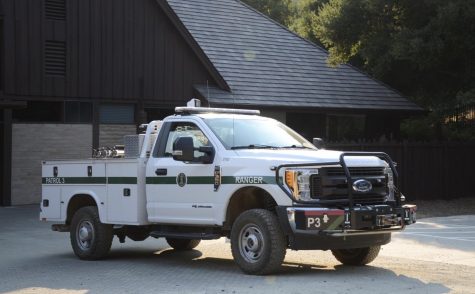
The suit also counters environmental concerns by asserting that nonresidents would take equal care in protecting the park as Palo Alto residents and that the park is “significantly underutilized”; Anderson reported that visitation has remained steady at around 152,000 visitors per year for the last 20 years. Historically, visitation peaked at 372,000 visitors in the early 1970s and declined through the ’80s and ’90s.
The last time rangers had to close the park because attendance hit the 1,000-person cap was in 1998.
The suit also noted that the Parks and Recreation Commission did not recommend further environmental studies besides collecting data from the pilot.
“I have heard that the park is ‘underused,’ but isn’t this a good thing?” Palo Alto resident Sophia Adamo wrote on Nextdoor. “I don’t believe we should be pushing for higher foot traffic in an area where wildlife is so vulnerable. Allowing the park to regularly reach its maximum capacity should not be our goal.”
“Honestly, I think there are much prettier places to hike nearby,” Adamo said. “I don’t see not being able to access Foothills Park on weekends to be a massive loss for anyone considering the abundance of other lovely areas nearby, but I do see opening it up to the masses as a massive loss for the wildlife who view the park as their sanctuary.”
“My response would be that the footprints of someone who lives in East Palo Alto or Mountain View or San Jose are no heavier than the footprints of someone who lives in Palo Alto,” Ng said when asked about environmental impact. “If they want to limit the number of people who can go into the park on any given day, that’s reasonable, but to limit it to just Palo Altans is unreasonable.”
McCauley agreed, arguing that everybody should be free to experience the park. He noted that at the same time he was appointed to the Parks and Recreation Commission, he was volunteering at an after-school program in East Palo Alto meant to close the achievement gaps between East Palo Alto students and their peers.
“There were these daily prompts to talk about, and one of them was if the kids had ever been to the ocean,” McCauley said. “I was blown away by how few of the kids had ever seen the seashore. It was something that kind of dawned on me — that here are these amazing and wonderful kids who have so few opportunities — and Palo Alto is hoarding a park.”
As to why the controversy has dragged out for so long, both Freeman and Cordell had similar takes.
“The simple answer is lack of political courage,” Cordell said. “Council members want to be re-elected; if they fear that taking a stance that opening the park to everyone will harm their re-election chances, they do everything they can to avoid addressing the issue.”
“Frankly, the lawsuit is a last resort,” Freeman said. “We’d rather resolve this through discussion, but the City has indicated that it’s unwilling to listen.”
Tanaka, however, reiterated that the park is effectively open to all, and that it isn’t a real issue.
“How exclusive is this park?” Tanaka said. “Is it really a racist park, or is it people making a lot of stuff out of nothing?”




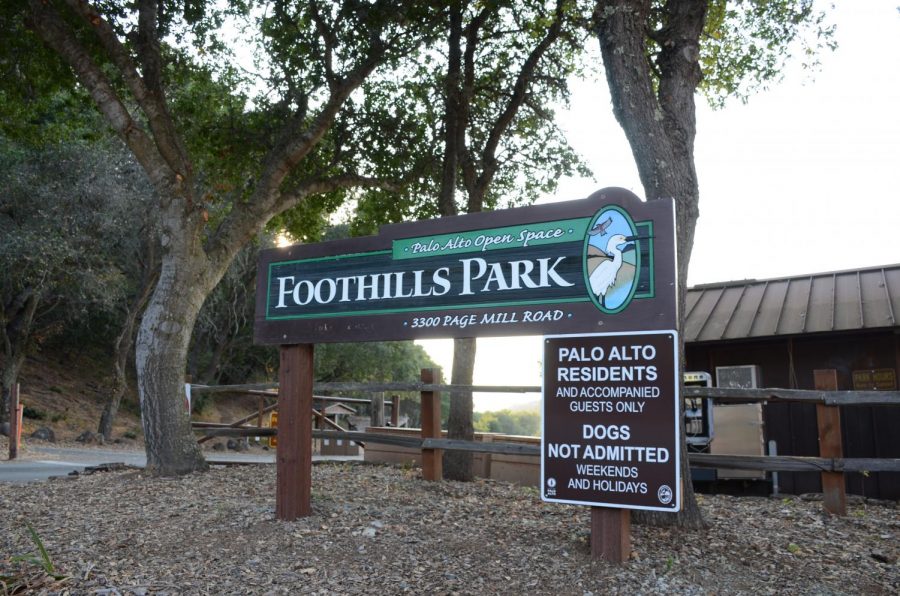
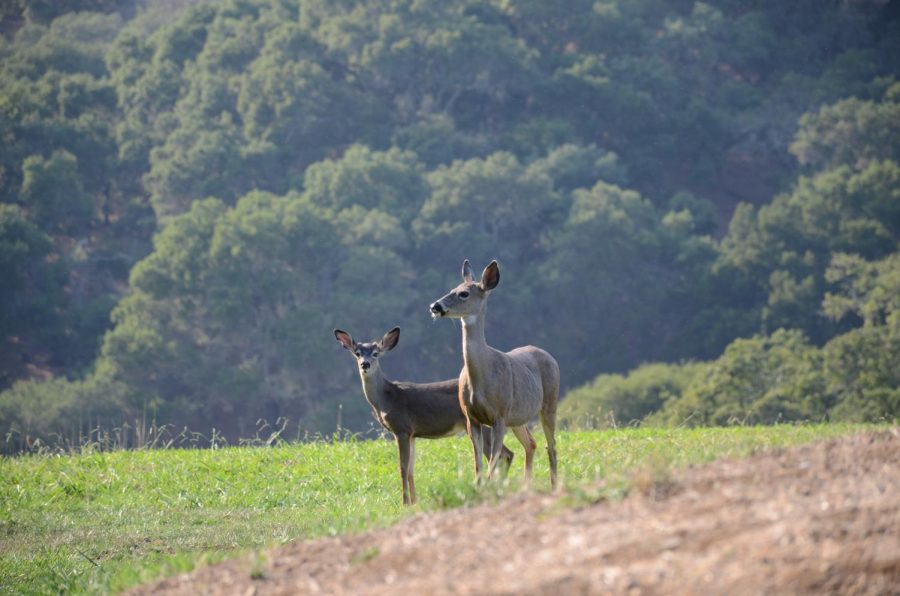
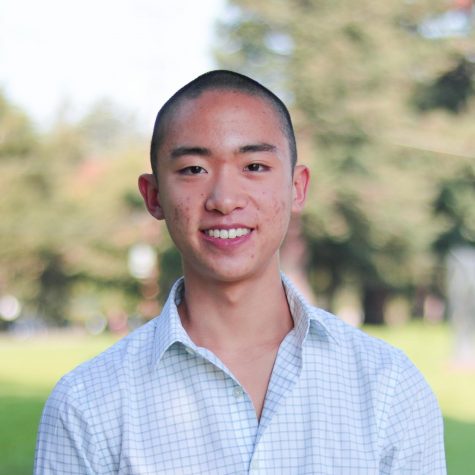
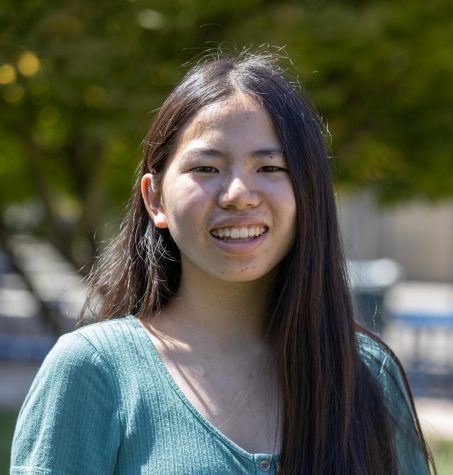
Nelson Minar | Nov 3, 2020 at 11:36 am
What a fantastic and detailed article! The Merc and the Chron would be lucky to have such thorough reporting.
Joanna Beyer | Oct 3, 2020 at 10:25 am
Excellent article. Thank you for doing the research and covering all sides of the issue. I especially liked your wording regarding the recent protests claiming “segregation”. Using that word exploited the BLM movement and it’s very serious issues.